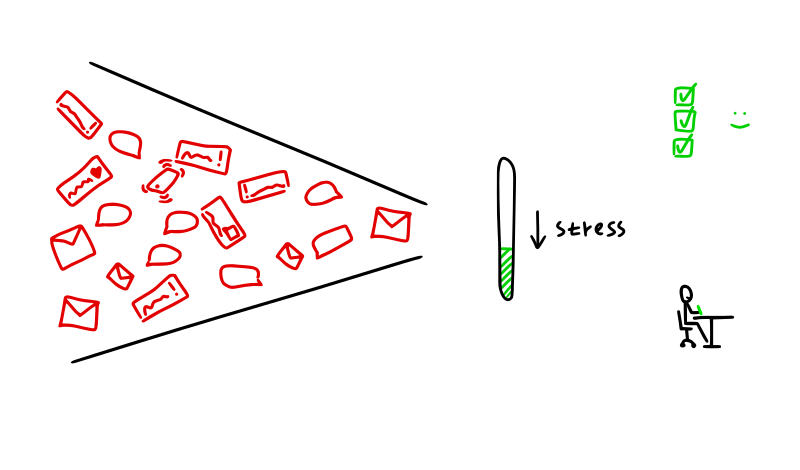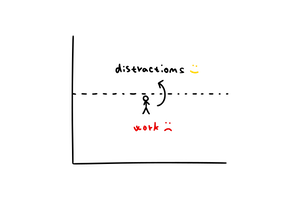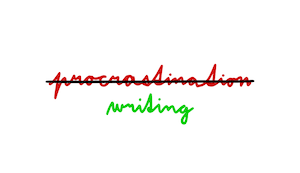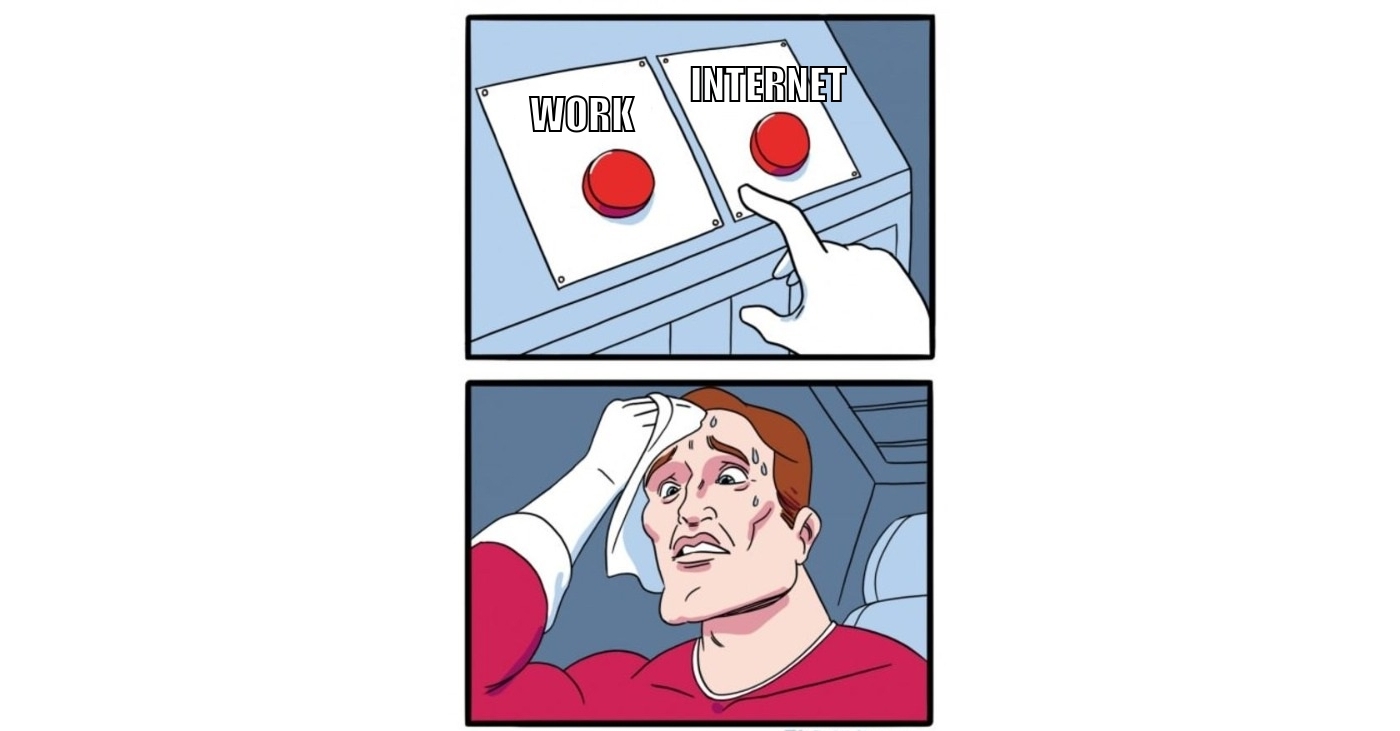Critical effort: why we reach a goal (or not)
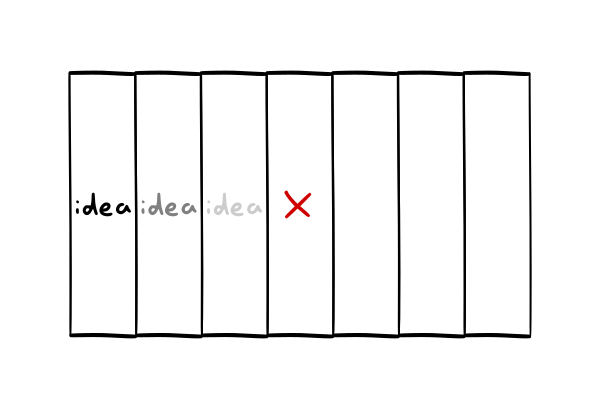
What's the difference between having an idea and successfully realizing it? That's what this post is about.
Modern life is hectic for most of us. It's never been easier to get distracted. It's never been easier to put things off.
We get ideas for what we could do every day.
"I could run a marathon."
"I could build a business."
"I could learn a new language."
Often, they are inspired by what we see others do on social media. Yet, most of these ideas go nowhere. Why?
A lot of us have gradually developed a habit of spending long hours online, passively consuming information or entertainment of one sort or another: Netflix shows, reruns of Friends, videos on YouTube, TikTok, Instagram... Pick your poison.
When we go to bed at the end of the day, we often regret spending that time the way we did. But watching videos is easy, and change is hard, so we repeat our performance the next day.
The trouble is that this kind of passive entertainment starts to take up more and more of our time, until it fills all available free time. And so, there's no more time to run those marathons, build those businesses, or learn those languages.
This creates a cycle. See an interesting idea → get inspired → do some googling → forget about the idea the next day because watching and scrolling is easier → back to step 1.
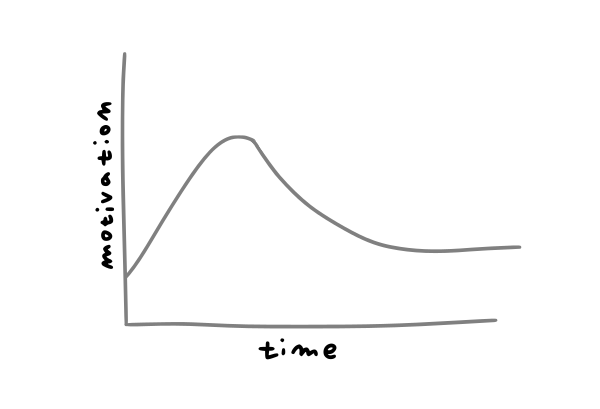
How to break out of that cycle? How to actually start acting on ideas?
Understand critical effort
You enter a critical period right after you get an idea. You get excited and feel inspired. It can last a few hours or a few days, depending on how busy life is, but the key period is generally from the moment you get the idea until you go to bed.
If you put in enough effort in that critical period, it will start a positive feedback loop. If you don’t, the idea will disappear from your mind without changing anything.
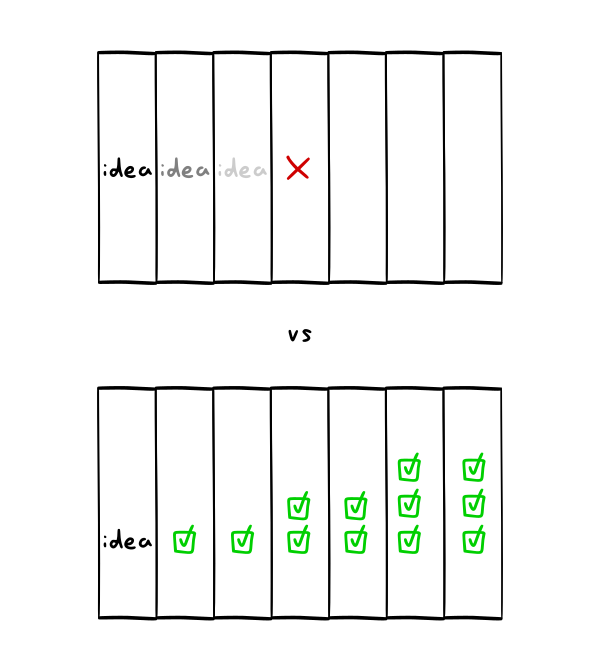
That’s critical effort: the initial push that starts the domino effect. It establishes a new pattern and starts the cycle of improvement.
So how does one get into the habit of putting in critical effort?
Here are 3 principles to follow.
Strike while the iron is hot
Get an idea? Act on it.
The key is to do something the very same day. It often doesn't matter what. The point is to take an idea and put it in the "I'm actually doing this" category in your mind.
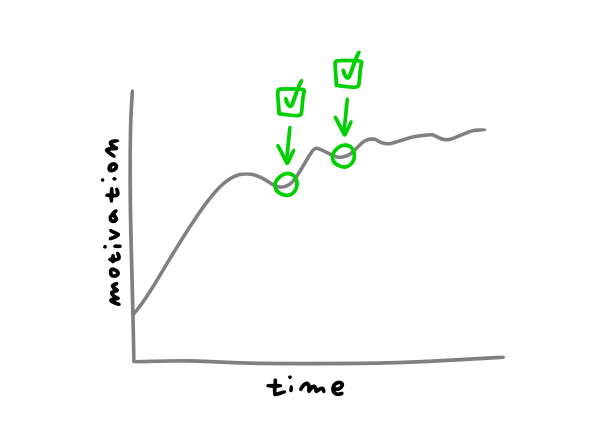
I want to write. Okay, write 1 bad page. I want to exercise. Okay, go for a 1 mile run and do some push-ups. I want to email that person. Okay, write a draft of the email. ...
Do something on Day 1. The effort is symbolic, it can be 5 minutes, it can be 4 hours. 30 minutes is probably enough in most cases.
As the saying goes: "Strike while the iron is hot."
Make a commitment of effort, money, or reputation
Stanford behavior scientist BJ Fogg advises using the one-time motivation boost to structure future behavior.
When you're motivated, do something hard that will make pursuing your goal easier or more compelling in the future.
What does that mean?
Find an online class. Buy a course that has accountability built in. Pay a coach.
These options cost money. However, you can do this for free too—you can message a friend and set up a social agreement like: Every week on Friday, we'll meet at 5PM and go to the gym together.
Invest some effort or money into making the behavior easy or more compelling in the future. Change your environment. Sign up for a program. Get others involved.
All of these will make it much more likely that you'll stick with the process.
Create the right kind of reminders
Before we begin, many reminders are bad. They get ignored and needlessly stress us out.
These kinds of reminders aren't good:
- Recurring calendar events we never act on.
- 20 post-it notes on your desk
- 15 tasks that have been on your list for ages
They are not compelling, they are not actionable, they overwhelm us instead.
You want to have few reminders, you want them to be actionable, and persistent or well-timed.
What does that look like in practice?
If you like to use post-it notes, don't have 5 in sight. 1-2. On one, write a short list of 1-4 important tasks for today. Few, actionable, persistent.
Or say you want to do 10 sun salutations after you wake up to get your blood flowing. Set a reminder for the evening to put a yoga mat next to your bed every evening. You'll wake up, see the yoga mat, and know what to do. 10 sun salutations is easy enough (actionable, not daunting) to do. That's a well-timed reminder.
Or print out a template like this one and put it on your door. Every time you see it, you'll be prompted to do the target behavior. If you see it 25x a day, one of those times might actually follow through.
Few, actionable, and persistent or well-timed—that's what you want your reminders to be.
Summary
Let's sum it up.
When you get an idea for how you want to change, you enter a critical period. If you do the 3 things below, it's much more likely that that idea will turn into reality and you will reach your goal.
- Start on Day 1: Strike while the iron is hot
- Make a commitment of effort, money, or reputation
- Create the right kind of reminders
Don't let motivation go to waste. Don't wait until tomorrow.
